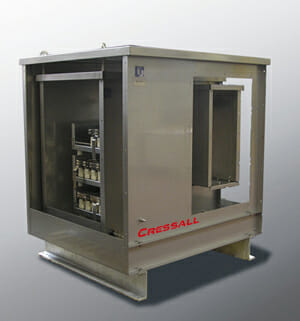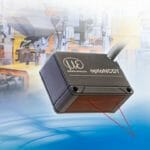~ Three key considerations when designing an electrical enclosure ~
There’s a lot to be learned from the famous fable, The Three Little Pigs. While the tale teaches us to stay wary of menacing wolves, it also reminds us of the importance of a sturdy home. Electrical equipment requires robust protection and a durable enclosure is vital to its safety. Here, Andrew Keith, product development director at power resistor manufacturer Cressall Resistors, explores the top considerations when designing an effective enclosure.
When designing a complex network of electrical components, an enclosure may be something of an afterthought. After all, it is simply a box that houses electrical components and connections, wiring, machinery controls and related equipment — all the important stuff.
However, it is this misconception that leads to failure — especially if important design considerations are forgotten or unfulfilled. Although enclosures can seem like a non-critical element in electrical system design, a failure to secure electrical equipment can result in a build up of moisture or dirt, a drastic change in temperature and poor ventilation.
Keep your cool
When designing a heat management system for an enclosure, manufacturers must account for external temperature fluctuations such as solar gain — heat from the sun. In addition, electrical equipment can generate significant heat as a by-product of their operation, known as losses, inside the cabinet. Failing to safely remove these losses will increase the temperature inside the enclosure and could adversely affect its contents.
One remedy is passive cooling. This technique uses the simple principal of convection to distribute heat from a higher temperature area to a lower one. To do this, enclosures must be designed with strategically placed vents that replace hot air inside the enclosure with cooler, external air.
However, the feasibility of passive cooling depends on its environment and the ambient temperature surrounding the enclosure must remain lower than the air inside it. Additional air filters may also be required to prevent dust or dirt from infiltrating the enclosure. Instead, design engineers may want to opt for active cooling by installing heat exchangers or air conditioners to cool the air inside the enclosure.
A material matter
Of the numerous materials available for electrical enclosure construction, each offers its own protective benefits. While painted carbon steel is the most cost-effective metallic choice, it has limited resistance to solvents, alkalis and acids and is thus best suited to indoor applications.
Stainless steel provides a much higher resistance and variants such as grade 316 are specified in industries that require resistance to chemical attack, such as pharmaceutical manufacturing, which must avoid excessive metallic contamination. As the material has better resistance against sulphates, seawater and high temperatures, we recommend this type of steel as the preferred choice for both indoor and outdoor applications.
Away from metals, fiberglass is a lighter weight choice, making it suitable for wall or pole-mounted installations. As fiberglass is not conductive, any open circuits would stay safely inside the enclosure and wouldn’t be transmitted through the material. The conductivity offered by a metallic enclosure enables it to be ground connected to reduce the risk of electrical shock should an exposed conductor come into contact with the enclosure.
Follow the rules
Many manufacturers design and build enclosures at a central location, such as Cressall’s facility in Leicester, before shipping the equipment to the end user. For an enclosure to comply with local guidelines, manufacturers must consider its end destination. Standards typically referenced are the International Electrotechnical Commission (IEC) 60529 Specification for ingress protection (IP) for countries using IEC standards, while the applicable EN standard should be followed for the European market.
Understanding these regulations can be daunting, which is why manufacturers should work alongside their customers to advise on the most effective solution. If the IP rating is too high, for example, it will place tighter restrictions the openings in the enclosure panel work and restrict ventilation.
Enclosures should only be opened using a key or tool and when all live parts are disconnected. Installing a viewing window reduces the need to access inside the enclosure. Other safety features include interlocking the enclosure door with a disconnecting device to prevent direct human contact with equipment, should the door need to be opened.
The considerations for enclosures extend beyond straw, sticks and bricks. However, if designers are to learn anything from the pigs, it is that we should never underestimate the value of a home’s materials. Enclosures may seem like just a box, but they play a vital part in equipment protection and their design needs to be carefully considered.





